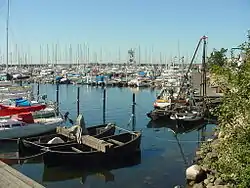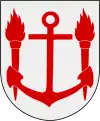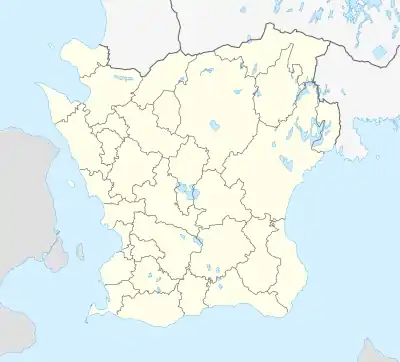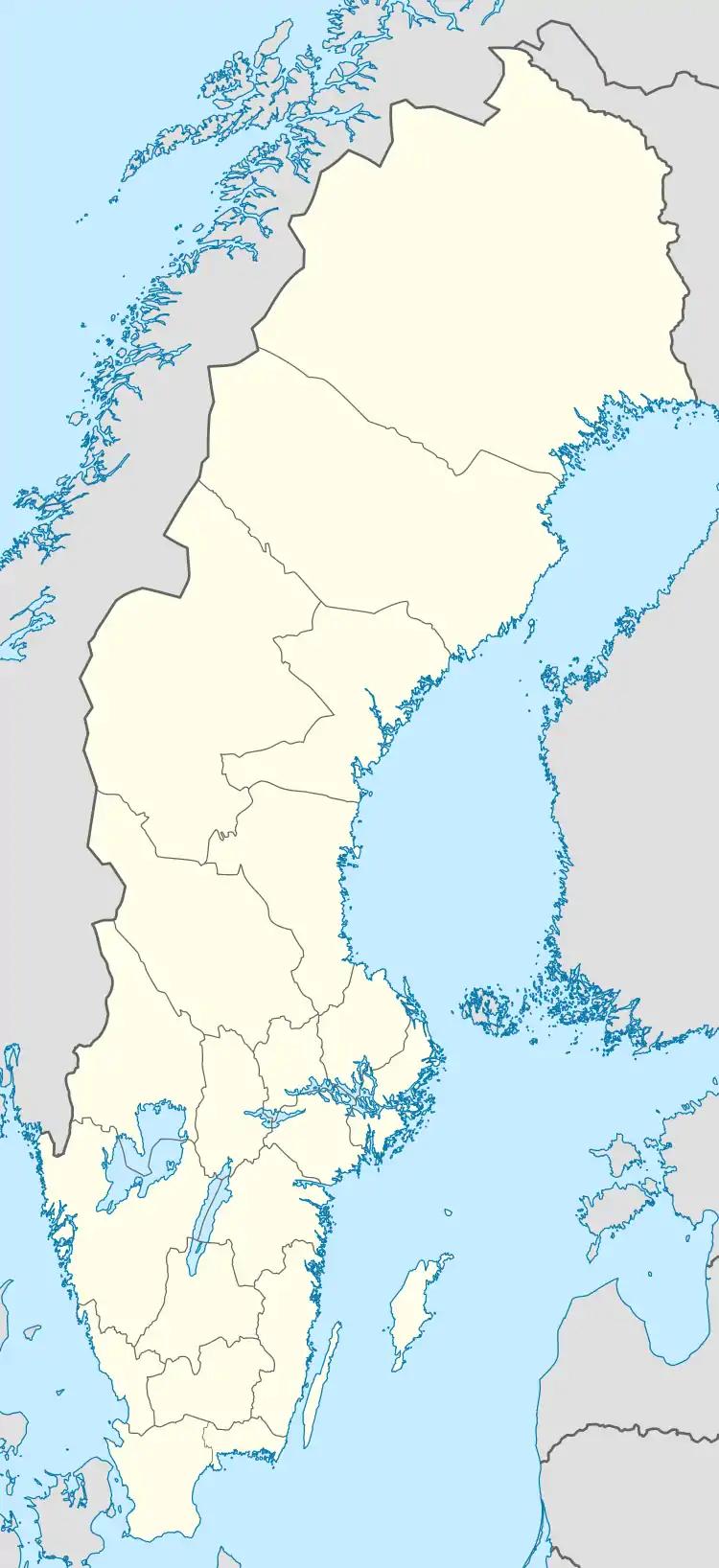Höganäs
Höganäs (Swedish pronunciation: [ˈhø̂ːɡaˌnɛːs])[2] (old Danish: Højenæs) is a locality and the seat of Höganäs Municipality, Skåne County, Sweden with 14,107 inhabitants in 2010.[1]
Höganäs | |
|---|---|
 Höganäs harbour in September 2002 | |
 Coat of arms | |
 Höganäs  Höganäs | |
| Coordinates: 56°12′N 12°34′E | |
| Country | Sweden |
| Province | Skåne |
| County | Skåne County |
| Municipality | Höganäs Municipality |
| Area | |
| • Total | 8.85 km2 (3.42 sq mi) |
| Population (31 December 2010)[1] | |
| • Total | 24,608 |
| • Density | 1,595/km2 (4,130/sq mi) |
| Time zone | UTC+1 (CET) |
| • Summer (DST) | UTC+2 (CEST) |
Höganäs is nationally known for its ceramics industry, Höganäs Keramik. Höganäs Keramik is part of Iittala Group.
Höganäs has the main office of Höganäs AB, one of the world's biggest iron powder manufacturer with subsidiaries around the world. The Höganäs AB company was founded by Count Eric Ruuth in 1797[3] which makes it one of Sweden's oldest companies.
History
Höganäs began as a small fishing village in the parish of Väsby, documented in 1488 in the written form Høyenæss. In the middle of the 17th century it had 17 homes. Coal was found in the area, and mining started in 1797. In 1798 a railway with wooden rails was built. It was the first of its kind in Sweden and was used to transport coal from the mine to the harbour. The population started to grow and new dwellings were built for the miners. During the 19th century more industries were built using clay for making ceramic products. Höganäs is well known still today for ceramics. The coal mines, however, were closed in the 1960s.[4] In 1936, when Höganäs got the title of a city it had 6,915 inhabitants. Since 1971 it is the seat of Höganäs Municipality, encompassing the Kullaberg peninsula with totally around 24,000 inhabitants.
In 2009, the city began accepting the euro in its shops, restaurants, banks, and other businesses.[5][6][7] More than 30 shops accept euros in cash as a part of a PR attempt.[8]
References
- "Tätorternas landareal, folkmängd och invånare per km2 2005 och 2010" (in Swedish). Statistics Sweden. 14 December 2011. Archived from the original on 27 January 2012. Retrieved 10 January 2012.
- Jöran Sahlgren; Gösta Bergman (1979). Svenska ortnamn med uttalsuppgifter (in Swedish). p. 12.
- http://www05.abb.com/global/scot/scot349.nsf/veritydisplay/b1509de64e555630c12576890076c417/$file/3bse057206_b_en_compact_800_-_just_the_right_size_and_price_for_elektrokoppar.pdf
- Gustav Westerholm (1994). "En kolgruvearbetares minnen – Del I (av tre)". Kullabygd (in Swedish). LXVII.
- "BBC NEWS | Business | Swedish town aims to be 'euro-city'". News.bbc.co.uk. 29 December 2008. Retrieved 1 January 2009.
- http://www.thelocal.se/16692/20090102/
- http://www.blt.se/nyheter/tt_inrikes/tva-valutor-i-skanska-hoganas(1063255).gm
- Delade meningar om euro hos handlare Archived 27 September 2011 at the Wayback Machine